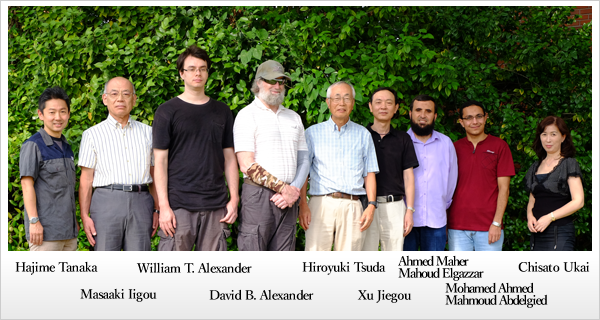Staff

Masaaki Iigou

- Research Theme
- Investigation of mechanisms for cancer prevention, inhibition of tumor growth, and anti-inflammatory properties by oral administration of lactofferin, a member of the transferrin family of iron-binding glycoproteins. Analysis of cytokines involved in toxicity and carcinogenicity.
- Scientific Assoc.
- Japanese Association for Lactoferrin
- Recent interests
- Recombinant human lactoferrin in the treatment of non-small cell lung cancer is now the ongoing Phase III trials in USA. It may become a cancer treatment product. We look forward to having good results from the study.
Xu Jiegou

- Research Theme
- With the rapid progress in nanotechnology, numerous nano-materials have being developed and have entered our daily life, oftentimes without adequate testing for their effects on human health. I am currently focusing on risk assessment of nano-materials, especially their carcinogenicity, so that another asbestos disaster does not occur .
- Scientific Assoc.
- Japanese Society for Cancer Research, Japanese Association for Lactoferrin
- Recent interests
- 1. Carcinogenic study of carbon nanotubes in the rat lung.
2. Toxic effects of ZnO nano-particles in the rat lung
David B. Alexander

- Research Theme
- My first interest is the carcinogenic potential of nanoparticles. That this field is extremely important is underlined by the consequences of the use of asbestos prior to the determination of its carcinogenic potential. One way in which exposure to nanoparticles could lead to carcinogenesis is induction of long-term inflammation. During inflammation oxygen radicals and cytokines are produced, and long-term inflammation increases the probability of these events leading to cancer.
Another interest is the role of lactoferrin (LF). LF, a component of the innate immune system, is present in high concentrations in milk, tears, airway and nasal fluids, and neutrophils. Its microbiostatic action is important in the removal of invading microbes. Intriguingly, ingestion of bovine LF primes the innate immune system. Our working model: bLF digestion in the stomach generates lactoferricin and other microbicidal peptides that interact with the intestinal microflora, generating microbial antigens. These antigens interact with intestinal cells and induce the expression of cytokines which prime immune effector cells. Therefore, bLF can help protect against infection and disease.
My third interest is caner therapy. Our system (ADMM) is assembled from 4 interchangeable cassettes, which allows vectors to be built which target diverse cancers.We are also collaborating with other groups in an effect to produce agents that can be used in cancer therapies.
- Scientific Assoc.
- Japanese Society for Cancer Research , Japanese Association for Lactoferrin








